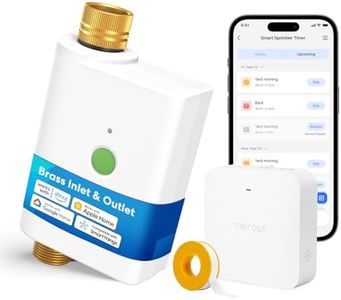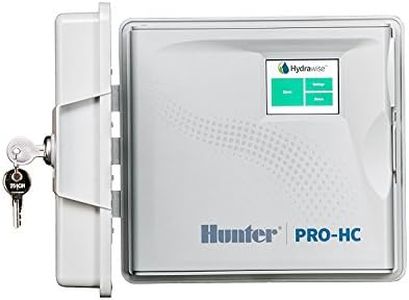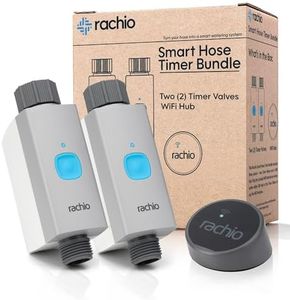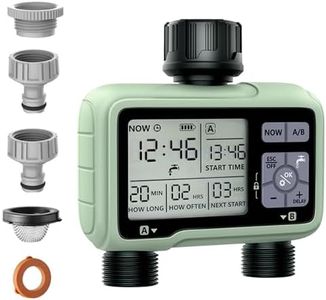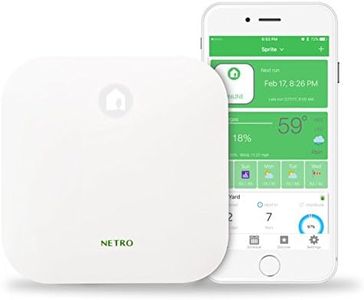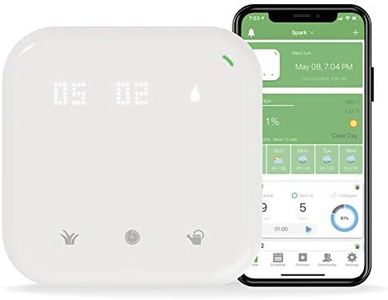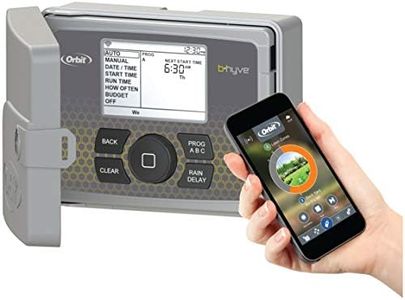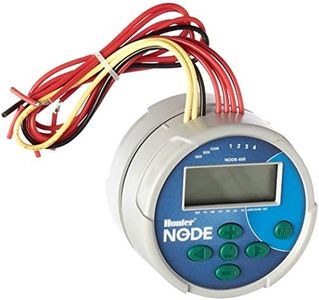We Use CookiesWe use cookies to enhance the security, performance,
functionality and for analytical and promotional activities. By continuing to browse this site you
are agreeing to our privacy policy
10 Best Irrigation Controllers
From leading brands and best sellers available on the web.Buying Guide for the Best Irrigation Controllers
Choosing the right irrigation controller can make a big difference in how efficiently and effectively you water your garden or landscape. The right choice will not only help you save water, but also ensure your plants get the care they need. When selecting an irrigation controller, you'll want to consider where and how you plan to use it—whether for a small garden, a large lawn, or a commercial property. Think about how much automation you desire, how easy you want the setup to be, and any specific watering needs you may have. Getting familiar with the key features will help you pick a controller that fits your lifestyle and your landscape.Number of Zones/StationsThe number of zones, sometimes called stations, tells you how many separate areas you can water independently from each other. Each zone typically represents a part of your yard or garden that might have different watering needs. Basic controllers may have 2-4 zones, suitable for small gardens, while more advanced ones can support 8, 12, or even more, suitable for larger or multi-section landscapes. When deciding, count the distinct areas that need unique watering schedules and ensure your controller supports at least that many zones.
Programming OptionsProgramming options describe how flexible and detailed you can make your watering schedule. Simple controllers let you set basic start and stop times, while more advanced models offer customizable days, multiple programs, and different run times for each zone. For uncomplicated needs, basic programming is fine. If you want different zones to water at different times or need seasonal adjustment, look for controllers with advanced scheduling. The more variety in your landscape, the more value you'll get from detailed programming.
Weather-Based Features (Smart Sensors)Weather-based features use data from sensors or the internet to adjust watering automatically depending on rainfall, temperature, or humidity. Some controllers use external rain or soil sensors, while others connect online to fetch weather forecasts. These features help save water and protect plants from overwatering. If you live in an area with variable weather, especially with frequent rain, weather-based irrigation is a great choice. If your weather is steady, you may be fine with a basic controller.
Manual ControlManual control allows you to start or stop watering anytime outside the programmed schedule. Some controllers have a simple button on the device, while others let you control watering manually from a smartphone app. Manual override is important for tasks like testing your system, watering newly planted areas, or dealing with unexpected heat. If you value convenience and flexibility, make sure your controller offers easy manual control options.
Connectivity (Wired vs. Wireless/Smartphone Compatibility)This refers to how you interact with your controller. Traditional controllers are operated via a built-in panel, but many now connect to Wi-Fi and let you program or monitor them from your phone or computer. Wireless, app-based controllers are great for tech-savvy users or those who travel, while basic wired models may be better for locations with no Wi-Fi or minimal technical needs. If you're often away or want to manage irrigation remotely, prioritize smart connectivity.
Ease of Installation and UseSome controllers are designed for do-it-yourself installation, while others may need professional help. Look for user-friendly displays, clear instructions, and easy wiring if you plan on installing it yourself. Also, consider how simple the interface is for everyday adjustments. If you prefer not to fuss with setup and programming, prioritize models marketed as 'easy install' or 'user-friendly.'
Expandability and Future-ProofingExpandability refers to how easily you can add more zones or connect new sensors in the future. Some controllers are fixed with a set number of zones, while others let you add zone modules if your landscape grows. If you think you'll add new areas or want to upgrade with more features later, choose a controller that supports expansion.
Power SourceIrrigation controllers usually run on either batteries or a direct electrical connection. Battery-operated models are portable and easier to install in remote areas without wiring. Plug-in controllers are more typical for permanent installations and larger systems. Consider the installation location and how reliable your power source is when making your choice.
